R.J. Crayton's Blog, page 3
May 9, 2020
It’s OK to Mourn What Was Lost
Since this pandemic has began, people have talked a lot about the new normal.
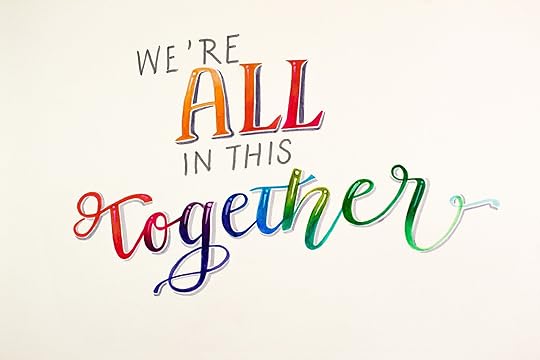 Source: Pixabay
Source: PixabayThis is a tacit acknowledgment that the world we once had, the way of life we once accepted as normal has left us. The ability to walk freely from place to place, to gather with friends and family, to go to work in a “normal” fashion was taken away from most of us by the pandemic.
And that is sad and frustrating. Some people cope by making the best of a bad situation, others cope by making a situation worse so they can feel like they have control over something in a situation that is beyond their control.
Change is scary, and that’s why people resist it. We don’t want to be thrust into this new normal. Especially when it’s much worse than what we had.
But sometimes life is like that. And while nobody likes it, the strength of human beings is being able to look forward, to look for solutions to our problems, to improvise until we find something that works, and to keep moving forward.
And while we have to move forward, it’s OK to take time to mourn what we’ve lost and acknowledge how it’s changed us. We have changed. We have lost the sense of safety and security that we once had. Some have lost loved ones. Some didn’t get to say goodbye. Some have lost jobs. Almost all have lost their daily routines.
It is a lot. And it happened quickly and drastically and, for many of us, with little warning. If some days you don’t feel like moving forward, it’s OK to acknowledge that. It’s OK to give yourself a break as you figure out how to cope.
The good news is, we are all learning together. Reach out to people if you need help. Not all will reach back (unfortunately, these situations can bring out selfishness and cruelty), but many people will reach back. The best of humanity reach out to others and lend a helping hand. And a kind word. And sometimes that is just what we need to help us move forward.
April 19, 2020
When Art and Fiction Collide
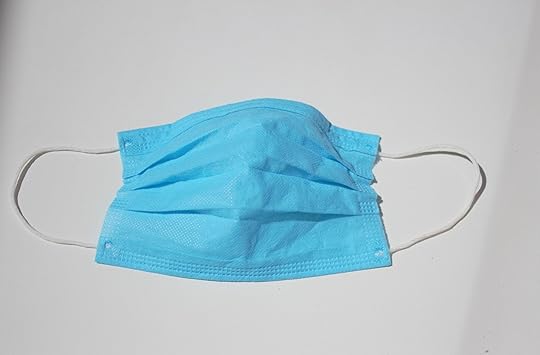
I have written several books that have pandemics in their life’s blood. Life First is the byproduct of a massive pandemic that has wiped out much of the population. In the virus series, my main characters–Elaan, Joshua, and Elijah are all coping with a world left devastated by a pandemic. And, in my yet-to-be-published novel, Out There, society is hiding from what is out there, the awful thing caused by a virus.
The notions of pandemics have always been of interest to me because they are scary. They are the monster that you cannot see. By the time you realize what is going on, it’s too late. For those who get it or don’t in the early stages, it’s often a matter of simply luck–good for those who miss out, bad for those who catch the devastating bug.
As an author, it’s a wonderful topic to explore in a cozy, safe world, where a pandemic is far off from reality.
Writing about the anxiety of a pandemic works because you can put it away and go back to life when it becomes too draining. Living it is very different. It confronts you everywhere you go. There are few safe places and no safe people in the new society in which we live.
The new normal has been very hard. It’s been particularly devastating to worry that if someone gets sick and dies, you will never see them again. The disease is so contagious, no one can sit by their bedside. Funerals can’t include the friends and extended families of the decedents because of social distancing.
This detail has reminded me of the horror of the fictional Heloan virus in my book Concealed. They called it the Hell virus for short, and the families didn’t get to say goodbye to their loved ones. Here is an excerpt from Concealed:
Elaan nodded and peered down at the cereal box. She didn’t want to talk about her mother, whom she missed terribly. A mother she never got to say goodbye to. A mother she saw one day and then never again. That was probably the hardest part. Or maybe that was the easiest part. She wasn’t sure…
But with the Helnoan virus, there were no goodbyes. Once people got sick, they were gone. The disease was so contagious, the sick were quarantined so their families didn’t see them again unless they were one of the four percent who survived. But the survivors were so few, that most people never saw the sick again. The bodies of the dead were bloated with disease. There could be no viewings or other contact with the corpse, for risk of contagion from bodily fluids. …You had the knowledge that your loved one was dead but no proof. You couldn’t look at that unmoving body to know that the person was gone forever.
It was bitter to imagine, back when I wrote about it. And it seems more bitter to actually live it in these times. My heart breaks for those who must live with this awful death for their loved one. There is a certain peace in being there for those who are dying–to comfort them, so they know that they are not alone, and to allow yourself those last moments of solace with that person. And today, tens of thousands of people are stripped of that, and it is sad beyond belief.
I try to remember that more survive this disease than die from it. That has been the wonderful place where reality has diverged from fiction, that so many more will survive. I am so thankful that our real-world pandemic is one in which by doing nothing but staying home, we increase chances of survival. We must rely on each other to survive, and most people are stepping up to the plate, and taking the care they need. And there are those going above and beyond to make it so those who cannot go out don’t have to. To everyone doing their part, I say thank you.
I hope everyone stays safe out there, and let’s end this pandemic much better than the fictional ones do–with way more lives saved, and bringing otu the best in people.
When Art and Fiction Collide

I have written several books that have pandemics in their life’s blood. Life First is the byproduct of a massive pandemic that has wiped out much of the population. In the virus series, my main characters–Elaan, Joshua, and Elijah are all coping with a world left devastated by a pandemic. And, in my yet-to-be-published novel, Out There, society is hiding from what is out there, the awful thing caused by a virus.
The notions of pandemics have always been of interest to me because they are scary. They are the monster that you cannot see. By the time you realize what is going on, it’s too late. For those who get it or don’t in the early stages, it’s often a matter of simply luck–good for those who miss out, bad for those who catch the devastating bug.
As an author, it’s a wonderful topic to explore in a cozy, safe world, where a pandemic is far off from reality.
Writing about the anxiety of a pandemic works because you can put it away and go back to life when it becomes too draining. Living it is very different. It confronts you everywhere you go. There are few safe places and no safe people in the new society in which we live.
The new normal has been very hard. It’s been particularly devastating to worry that if someone gets sick and dies, you will never see them again. The disease is so contagious, no one can sit by their bedside. Funerals can’t include the friends and extended families of the decedents because of social distancing.
This detail has reminded me of the horror of the fictional Heloan virus in my book Concealed. They called it the Hell virus for short, and the families didn’t get to say goodbye to their loved ones. Here is an excerpt from Concealed:
Elaan nodded and peered down at the cereal box. She didn’t want to talk about her mother, whom she missed terribly. A mother she never got to say goodbye to. A mother she saw one day and then never again. That was probably the hardest part. Or maybe that was the easiest part. She wasn’t sure…
But with the Helnoan virus, there were no goodbyes. Once people got sick, they were gone. The disease was so contagious, the sick were quarantined so their families didn’t see them again unless they were one of the four percent who survived. But the survivors were so few, that most people never saw the sick again. The bodies of the dead were bloated with disease. There could be no viewings or other contact with the corpse, for risk of contagion from bodily fluids. …You had the knowledge that your loved one was dead but no proof. You couldn’t look at that unmoving body to know that the person was gone forever.
It was bitter to imagine, back when I wrote about it. And it seems more bitter to actually live it in these times. My heart breaks for those who must live with this awful death for their loved one. There is a certain peace in being there for those who are dying–to comfort them, so they know that they are not alone, and to allow yourself those last moments of solace with that person. And today, tens of thousands of people are stripped of that, and it is sad beyond belief.
I try to remember that more survive this disease than die from it. That has been the wonderful place where reality has diverged from fiction, that so many more will survive. I am so thankful that our real-world pandemic is one in which by doing nothing but staying home, we increase chances of survival. We must rely on each other to survive, and most people are stepping up to the plate, and taking the care they need. And there are those going above and beyond to make it so those who cannot go out don’t have to. To everyone doing their part, I say thank you.
I hope everyone stays safe out there, and let’s end this pandemic much better than the fictional ones do–with way more lives saved, and bringing otu the best in people.
March 8, 2020
Leap Ahead: You Can Still Reap the Benefits of that Extra Day
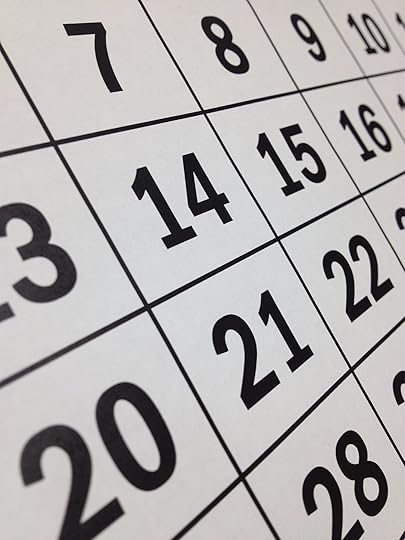
A quick look at the calendar reveals that Feb. 29 has already past. The joy of the leap year is over, right? Nope. Not so fast. Just because the day is over doesn’t mean you can’t reap the benefits of a leap year.
When people think of leap years, they think of the extra day we slotted on the calendar. But it doesn’t matter where that day is on the calendar. You can choose to take advantage of it any time of the year.
That extra day is part of our year, and you can act as if we didn’t have a 29th, that we went straight from the 28th to March 1. And the day that you’ve got right now. This is your extra day. This is the day you get to do what you please with. This is the extra day to accomplish something spectacular.
An extra day means a chance to leap ahead on that project you’re doing just for you. It’s a chance to pamper yourself, to take that time that you need.
So, don’t worry if you’ve missed it, if you didn’t do something awesome on the 29th. Make the most of your extra day any time you want.
As for me, I’m going to parse out my extra day throughout the year, taking time to update projects and get work done when I seen an opportunity. I got an extra day this year, so I want to take full advantage of it. How about you?
February 15, 2020
The Benefit of a Team when it Comes to Diversity

There’s been a lot of talk in publishing about the lack of diversity in publishing. And two recent incidents come to mind that show that a lot of the diversity problems that occur happen when you don’t have a team to run things by. When you don’t have a diverse group of people who can give you feedback.
Let’s start with the Romance Writers of America, who imploded after a scandal involving the disciplining of Chinese American author Courtney Milan. The organization punished Milan because she criticized a writer’s book as a “racist mess.” Rather than taking the fact that the author later revised the book to clean up the racism as an indication that Milan was right (and truth is always a defense to slander, libel and other such accusations), they called Milan a bully. While there were many problems with what happened, it represented to many a longstanding problem of not having enough voices in the room, to have a fair take on a subject.
It’s the equivalent of having an all male jury for a crime of violence against a woman. Does it mean the male jury will automatically side with the man? Not exactly. But it does mean, there will be no female perspective in that jury and something that sounds odd to the men, without the context of a woman–or better yet, six women–saying this is normal, and is actually not odd.
Not knowing something doesn’t make you a bad person. However, when something affects a broad range of people, not doing your due diligence and connecting with a variety of folks to get it right, makes you wrong.
The other example of an issue gone horribly wrong was the Barnes & Noble, Penguin Random House initiative to put blackface covers on classic novels. They called them diverse covers, but they changed nothing inside the book. they got the obvious criticism for essentially trying to fool people with black covers to present white works during black history month–what some described as a vile bait and switch. Others suggested they’d have been better off simply promoting black authors, not white authors with black covers.
And while the backlash would have been obvious by talking to a diverse group of people given the freedom to be honest, that didn’t happen. This one was somewhat more disturbing because there were teams at three different companies involved and not a single person said, “Hey, this could be a problem.”
And that’s why having a good team matters. Your team can help you avoid mistakes if you put together the right team. A recent study from Harvard talks about the value of having complementary workers. It noted that employees can earn more money if they are on a team with people that complement, rather than duplicate their skills.
I contend the same holds true when you want diversity. You will get better results, a clearer picture when you have multiple perspectives that can inform your decision making.
The problem in the writing world is that we, as writers, are too often alone. So much of the business of authoring is done in solitary. And when the perspective need only be your own, that may work just fine. But, there is value in having a team to bounce ideas off of, to vett things you are unsure about or don’t have experience with. There is value in having a team who will tell you when they don’t think something is a good idea, when they raise concerns about how you’re approaching thing. Does it mean that you’ll always choose right, or that the other opinion will always be the correct thing to do? No. Of course not. No one is correct 100 percent of the time, but having that other perspective will help you think of things you hadn’t considered before, and it can help move you in the direction of inclusion and empathy, and those are always good things.
Do you have a team you can turn to bounce ideas off of?
February 2, 2020
When it comes to your health, whose beliefs should matter most–yours or theirs?

When my mother was diagnosed with cancer more than a decade ago, she didn’t get the diagnosis on a routine visit, or after the doctors performed tests because she wasn’t feeling quite herself. She got the diagnosis because she was deathly ill. Her undiagnosed cancer had caused a host of other problems that could have lead to kidney failure and death.
When she was in the hospital, they had a medication that could intervene, that could stop the problems causing her kidneys to fail. Only, the doctors refused to give it to her. That’s right. The medication that could save her life was refused to her. You might be wondering why. Because it was a Catholic hospital. A hospital that did not believe in abortion. A hospital that did not believe in giving treatments that would terminate a pregnancy. A hospital that gave a menopausal woman a pregnancy test that incorrectly came back positive.
My mother is alive and well and, like I said, it’s been more than a decade since this happened. But the memory came back to me the other day when I ran across this press release, Few Consider Religious Affiliation of Their Hospital, Don’t Want Religious Restrictions on Healthcare. Prior to my mother’s illness, I hadn’t really considered a hospital’s religious affiliation. It didn’t seem it mattered.
Only as my father called me the night and explained the horror of the day, that it occurred to me that the hospital’s beliefs can matter. Immensely. Luckily, my father is a man who is good in a crisis. He called his cousin, an obstetrician, who reviewed my mother’s chart quickly, and explained to the doctors at this hospital what likely caused the false positive and convinced them to begin treatment. I was fortunate enough only to get seconds of anguish and outrage on their behalf after the fact. I did not have to endure the ridiculousness of a doctor telling me he cared more about a phantom baby than my wife of nearly 30 years [at the time]. The fact that my father had a cool head and persevered to make sure his wife was done right, was not the point. The fact that he had to endure such nonsense in the first place is what appalled me. That the fact that he told the doctor that he wanted his wife treated mattered nothing to the doctor.
The research mentioned noted that most people don’t think about a hospital’s religious affiliation. And, living in America, it’s clear to see why people wouldn’t. The country was founded on the principle of religious freedom. Your religion shouldn’t matter to me. You have a right to practice it and go on your merry way, as I have a right to practice mine. Yet, when your practice interferes with my healthcare decisions…we have problems.
So, who should get the say? I advocate wholly for the patient, within the law. However, there are a spate of practices–such as doctors refusing to do procedures over their religious objections–which can cause harm. If the doctor is one of dozens on duty, it doesn’t matter. If the doctor is the only one in a large rural area, then that doctor’s choices are denying patients the care they want and are entitled to under the law, but that the doctor simply refuses to give. Interestingly, if a doctor’s religion was the KKK, they would still not be able to refuse to care for minorities. (The flip side of that is, minorities should not want that doctor’s care, for it will likely be subpar.)
Medical professionals, their governing boards, and legislators alike struggle with the issue of who’s choices should matter most. Is what the patient wants what matters or what the doctor wants? We struggle with this over matters of people refusing medical care–wanting to die instead of take treatment. There are doctors who refuse to give treatments that would kill a fetus. There are those who would not want to reduce care that was keeping you alive. There are parents that want doctors to continue treating their children when doctors say there is nothing left for them to do.
It is all complex and at times heart-rending. I tend to fall on the side of patient rights, on doing what the patient wants, even if it is not the doctor’s natural or religious inclination. Though, if what a patient wants is illegal or immoral, what then?
As the world changes, becomes more polarized, these questions will need answering. More rights will need to be spelled out so people can understand what they should expect and what is reasonable, and no the limits of what will they can impose on others and vice versa.
What has been your experience with religious hospitals?
January 19, 2020
What are your favorite ‘time warp’ items?
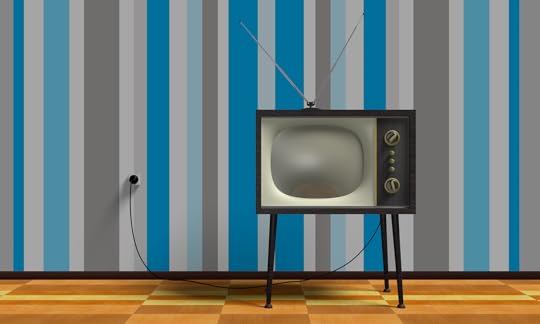
If I ever tell someone on the phone that one of my favorite television shows as a kid was Mr. Ed, they think I’m older than I am. Probably because Mr. Ed first aired back in 1961. It was actually a favorite of my father’s when he was a kid (great minds, right?)
Only, my love of Mr. Ed was forged by Nick at Nite, which decided to show old TV shows in the evenings. And me, with nothing better to do, soaked them up. I loved it when Ed crooned, “Willburrrr” in his throaty whinnying voice. I also really liked the Donna Reed show. And prior to seeing the Donna Reed show, I had never seen It’s a Wonderful Life. Besides the general nature of the film, I think I adored it because Donna was in it. And Patty Duke. I LOVED the Patty Duke show. “They laugh alike, they walk alike, at times they even talk alike. You can lose your mind, when cousins are two of a kind.”
I enjoyed my little time warp into the past. I find it interesting with my own children which things they are totally aware of and which they are oblivious to. The modern age of technology has given them a chance to have time warps as I did. They can immerse themselves into mass media of today’s era and those long past
My daughter knows a lot of 80s and 90s music–not because I listen to it often–but because she loved Glee and binged all the episodes on Netflix. So, if a George Michael song comes on the radio during an ’80s weekend, she’ll sing along with it. She adores Whitney Houston. (I mean, there’s no reason she shouldn’t, upon hearing her sing, but Whitney was long past her prime when my daughter was born, and had died prior to my kid reaching double digits in age.) So, it’s interesting to see these moments of time warp.
Oddly enough, I only feel like the time warps apply to mass media, as it seems that books have been multigenerational for ages, with it common to pass on an old classic. The TV shows often seem of there era. My kids wouldn’t even watch Alf, thinking it looked ridiculous (Yet, somehow they love Roger on American Dad. OK).
What are your favorite time warp items–are they songs your parents adored, or old TV?
January 5, 2020
Is 2020 Going to Be Your Best Year?

It’s finally 2020 and all the jokes about finally seeing clearly are upon us. Or, if you’re like my son, when you woke up on New Year’s Day, you turned immediately ran up to your loved ones and said, “I am so glad to see you. I haven’t seen you since last decade!”
But, as we leave one decade behind, and embark into a new one, we tend to fall into one of two camps: those who see a bright future ahead, a time for change; and those who see more of the same crap they’ve been dealing with in the past.
One is a fresh, optimistic attitude, while the other mires us in pessimism. If I’m being completely honest, I began 2020 on the pessimistic side. Despite the rollover of a decade having the potential to be exciting, I didn’t find the lead-upfilled with anticipation. At most, it seemed like any other year.
But as 2019 closed out, and some in my family talked of resolutions, I decided that, excited or not, I would make my 2020 grand. I didn’t have to be filled with anticipation to be filled with determination. And so I resolved to read more, write more and keep up with my social media more this year.
That’s overly nebulous as a goal, so I specifically committed to 30 minutes of each daily, to ensure I have a steady work ethic throughout the year. And while it’s not a huge commitment in terms of time, it is an hour-and-a-half each day outside of my 9-to-5, and time with the family, so it’s good.
New years often give people an opportunity to reassess and decide what they want to do differently. With the onset of 2020, I think a lot of people are looking forward with new vigor. And that’s wonderful.
Just remember, the new year doesn’t have to be your time to make a change, to propose something new, to reinvent yourself. You can do it at anytime, so long as you commit to forging a new path.
So, what path will you forge in 2020? Will you make this your best year?
August 25, 2019
Are we living in a dystopia?
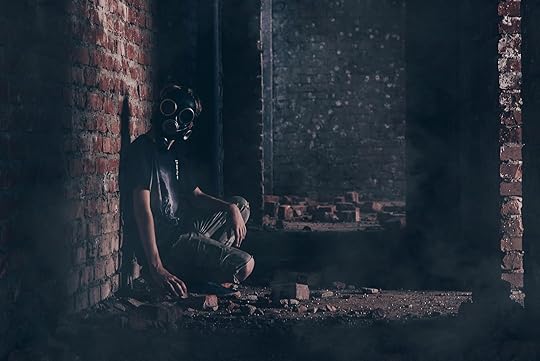
I was reading the news recently, a story about a judge ruling that children being forcibly separated from their parents and locked in cages deserved blankets and toothpaste, and wondered to myself if we weren’t living in some version of a real-life dystopian.
Don’t believe me? Well, let’s take a look at dystopias–first by definition, and then by example. Merriam-Webster is pretty clear; it defines dystopia as “an imagined world or society in which people lead wretched, dehumanized, fearful lives.”
The idea was a faint one at first, but the more I thought about it, it occurred to me that we are living in a dystopian nightmare, and we have been for quite some time.
Since we’re talking about “real-life” dystopia, we shall get rid of the imagined part and move onto the crux of that definition. “A society in which people lead wretched, dehumanized, fearful lives.”
Unfortunately, “people” is not as clear as is necessary. Is it all people, some people, a large swath of people, or some other more specific version? That’s important to know because that really can help us decide if we are living in a real-life dystopia or not. I mean, if it’s all people, then, sitting here in Maryland, we are not a dystopia. If it’s some people, then those people sitting in cages, or hiding out from bombs, terrorists, and gunmen in Syria would surely argue they are living in a dystopia.
And frankly, that is where I fall on the spectrum. A dystopian society is one where a large group of people are leading wretched, dehumanized, fearful lives. If you look at dystopian literature, in much of it, they are a place in that world where people seek to escape, a place in the world where the horror isn’t happening. So, while I may not personally be experiencing the dystopia lifestyle that some three-year-old in a cage is living, I am still in that world. I am living that life they hope to escape to. They are living the wretched, dehumanized, fearful existence. Yet, we all inhabit the same world, so we are all in this dystopia.
But, you don’t have to take my word on it. Let’s look at some dystopian literature.
1984
Let’s start with 1984, the granddaddy of the genre, so to speak. The dystopian novel is set in Oceania, which includes the Americas and Great Britain. Those in Oceania are told to love Big Brother and that they must obey. They are told there is constant war outside, yet, it’s unclear if that is true or not. They know only that they are told there is nothing for them beyond the hellish (I mean, wonderful Big Brother) world they live in. This dystopia clearly shows that people are told there is nothing more and the world they live in is totalitarian, and we see–based on our own understandings of what life should be–that it is wretched, dehumanized and fearful. Yet, there is hope–an underground who wants to overcome Big Brother. Because the book is set squarely in Winston’s POV, we don’t really know what’s going on on the outside. Is there a better world out there that doesn’t give a damn about what is happening in Oceania, or is the world as bleak as Big Brother tells its citizens it is? Constant war, rationing, and turmoil. For a real-world comparison, we need look no further than the concentration camps of the Holocaust. Those inside had no access to the outside world. They knew only what their Nazi oppressors told them. They may have felt forgotten and abandoned by the world. Had their captors told them the world was at perpetual war, with the Fuhrer winning, they would have no way to know otherwise. While we have the historical data to show us both sides of the Holocaust, we have only Winston’s view, so we’ll never really know if things in that world were as Winston believed (due to his lack of access to information) or if there was some part of the world eating dinner, and lamenting how awful it must be to live Oceania, and how thankful they are they don’t live there.
The Handmaid’s Tale
Let’s move on to Gilead, from Margaret Atwood’s The Handmaid’s Tale. This novel presents the wretched, dehumanized and fearful existence of the handmaid Offred. Her name the first hint of the dehumanization. She doesn’t get a name of her own. She is essentially owned by Fred, or Of Fred, making her Offred. But in this dystopia, we have explicit knowledge of a place where things are better: Canada. Offred, as she recounts her story, tells of her attempt to escape to Canada, to get to a country that has not descended into the dystopia of the former United States, much of which is now Gilead. Again, we have the world these people live in as being hell. The women who can procreate are forced to have sex with strange men they’ve been given to. And there is a place that they can escape to, if they can just get there. We have seen this before in history, very easily and cleary in U.S. history. Let me quote from a piece in Medium on slave breeding farms: “The slave population of the breeding farm was mostly women and children not old enough to be sold, and a limited number of men whose job was to impregnate as many slave women as possible. The slaves were often given hoods or bags over their heads to keep them from knowing who they were having forced sex with. It could be someone they know, perhaps a niece, aunt, sister, or their own mother. The breeders only wanted a child that could be sold.” For those slaves, they lived in dystopia in Richmond, Virginia, but just down the street, white people lived as if nothing bad was happening. Even in Gilead, the handmaids were oppressed, while the men lived as if life was golden for them. A two-fold world, where some had all they desired and others experienced “wretched, dehumanized, fearful” lives.
The Hunger Games
Let’s look at the popular Hunger Games novel, set in Panem, where 12 districts send their children to compete to the death in the Hunger Games. For those living in the 12 districts, there seems to be an uneven dystopia. None of the districts have great lives, but some districts seem to be less oppressed than others. It’s like a caste system that seems to allow some districts to see themselves better than others –with those closest in number seeming to fare better. However, they are all oppressed because it is they who send their children to the games, not the residents of the capital. And this is the interesting thing here. There seem to be two places of respite here. There is the capital, where people enjoy food, wine, and merriment to their heart’s desire, with little thought to the trouble of those in the districts, those who provided them their food. This has parallels in most Western societies. From U.S. slavery to the peasants of France who beheaded the monarchs indifferent to their suffering, we have seen what happens when some enjoy lives of feast while ignoring the masses experiencing wretched, dehumanized, fearful lives. And while the capital is a place that has a better life, it does not seem you can simply escape to the Capital, blend in and live their life. Still, the main character, Katniss, and her friend Gale imagine escaping into unincorporated parts of Panem and living off the woods. While it’s not clear how real this hope is, it is still a hope they hold out. That there is a place outside of their wretched, dehumanized, fearful existence.
So, do we live in a dystopia? Yes. In all dystopia’s the world is a wretched, dehumanizing, fearful place for the main characters, but there are those who are not living that existence. There are those who are enjoying a world of what we would view as normalcy and peace. Just like in the dystopian novels, there are people living on both sides. There are those living wretched, dehumanized fearful lives out there. If you’re not one of them, be thankful first, and then set your sights on helping those who are living the wretched, dehumanizing, fearful life. I do not know if it is possible to create a world where no one is suffering a dystopian existence, but I do believe it’s worth trying to help stop any dystopias that we know on.
August 5, 2019
A Lesson in Branding
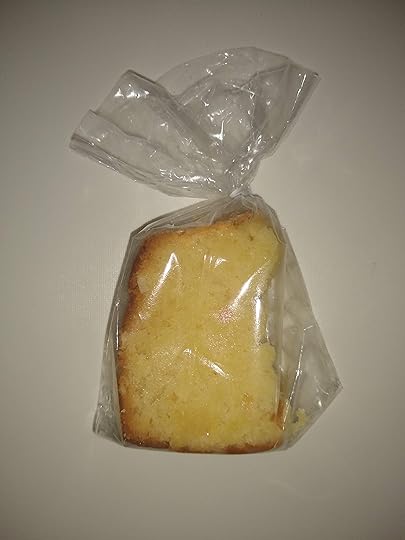 A delicious slice of coconut pound cake, with no label.
A delicious slice of coconut pound cake, with no label.People talk all the time about the importance of branding. Of having the right message for your brand, or making sure your brand is consistent. And as much as those things are important, even more so is just actually stamping your brand on your product.
I saw the importance of this first-hand just the other day. I decided to get lunch out because I’d forgotten part of my lunch at home. I’d worked later than normal to finish a project so I didn’t feel like I had to rush when I got back to my desk. That meant I was starving when I left the office. Right across the street from my building is a farmers/food market that has food trucks. I walked over and happened to see a stand selling cakes. There was a woman making a transaction, which gave me a moment to look at the cakes, which looked super moist and tasty. I grabbed a pound cake slice wrapped in plastic, along with a bag of chocolate chip cookies for my kids, paid quickly with my credit card, and then went to the Ethiopian truck to get lunch.
When I got back to my desk, I ate my lunch, then decided to dig into the cake. It was the best cake ever. So moist, so delicious. I wanted to tell someone. I grabbed the bag they’d put my cake in. It was a brown paper bag. No label. I looked at the plastic bag the cake was wrapped in. No label. There was nothing on it but a twist tie.
The writer in me panicked slightly. Had I been poisoned by a band of serial killers who’s nefarious plot involved providing you the joy of the most heavenly tasting cake dosed with deadly venom? Now, while you instantaneously realized that was the most insane idea you’ve ever heard, it took me another 60 seconds or so to come to that conclusion.
Once I did, it occurred to me that that he place just didn’t think to brand its product. And that’s sad because the cake was delicious. I mean, heavenly good. And this is not me reminiscing wistfully. I ate half the piece of cake for lunch (and that took major willpower). When I decided to have the rest later, I told myself the cake couldn’t have been that good. Yet, when I had the rest, it went straight to the ecstasy center in my mind. It was just a wildly enjoyable experience.
And had I paid cash, I’d have no idea who made it or be sure I might ever find these vendors again. However, I didn’t pay cash. I paid with a credit card via their square app. And when I was checking my email later that day, I found a receipt from the Cowbell Kitchen, sent just about the time I went out to get lunch. I figured this had to be them. I checked out the website, and realized, yep, it’s them.
I sent them a note telling them my experience and they thanked me for my suggestion. I’m hopeful they take it up. Anyone who happens upon their tasties should know where it came from. The cookies I bought for my kids–were devoured. “Mom, these are the best cookies ever,” my daughter said. (Gee, she is my kid).
So, definitely, if you’re selling something, stick your name on it. Yes, lots of people will know who you are. They’ll pay attention to the sign on your stand. Some of us are absent-minded and hungry and just grab and go. We need branding. Really, we need it.



